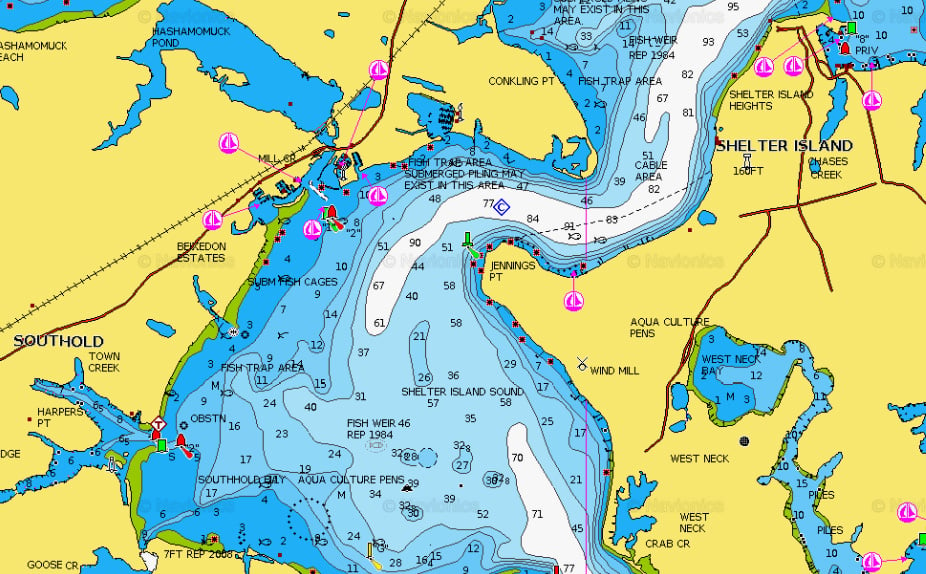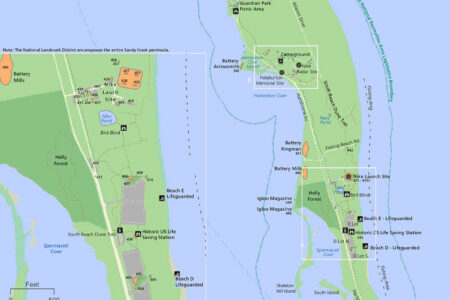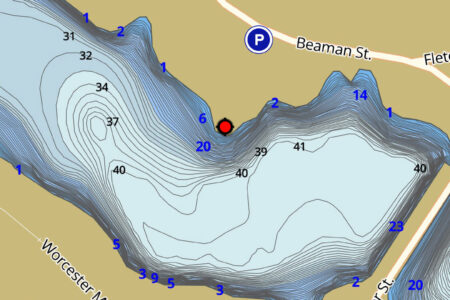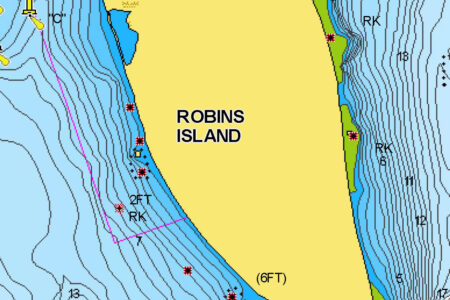
72 23’ W / 41 04’ N
Along the west side of Shelter Island in Peconic Bay is a landmark and fishing hotspot known as the Greenlawns. The name is derived from a pair of mansions side by side of each other with identical size lawns distinguishing the location. While the landscape and scenery may be impressive, it is certainly not the reason why anglers cluster around this area each season. The opportunity for a double digit fluke is the draw for many anglers heading to the North Fork. The odds of catching that prize fluke this season increased with the starting date of fluke season in 2018 moved up to May 4. In 2017, fluke season opened on May 17, and many captains and anglers felt that most of the big fluke had already exited the bay by then. Early May is also prime time for big sea porgies that are usually willing to suck down clam baits by their season opener of May 1.
The bottom contour along the west side of Shelter Island and especially near the Greenlawns consists of a gravel and sandy bottom as well as some rocks and plenty of hills and slopes. In turn, this particular habitat attracts myriad forage, including large amounts of squid, bunker and spearing. Blend all these elements together and it’s no mystery why these fluke and porgies, along with weakfish, striped bass and bluefish call this place home. The water depth ranges anywhere from 10 and 65 feet with a moderate to swift current. Drifting through the grounds may require lead of 6 to 8 or more ounces, especially on windy days and moon tides.
When targeting fluke, fish both the upside and downside of the shoals in 45 to 65 feet of water on a moving tide. Although long strips of fresh squid or whole squid make prime baits, sand eels and spearing on standard fluke rigs also produce their share of fish. How long the fluke fishing remains good often depends on when the bulk of the squid move out of the bay, which can range anywhere from mid-May to early June. Their next move is usually into Gardiners Bay.
Bluefish have been showing up in big numbers by the first or second week of May in recent years. Last season saw a decent pick of weakfish up to 8 pounds through the month of May. Spoons, tins and diamond jigs will pull the wool over the eyes of the blues while hi-lo rigs baited with large strips of squid or nice fat sandworms will take care of the weakfish. The rip lines and the drains should hold some quality weakfish, while bluefish can pop up anywhere at any time. Watch for the birds and have a rod armed and ready if you want to have a blast with the feisty choppers.
Porgies are the mainstay during the summer months with either drifting or anchoring being effective. Those big sea porgies will move off the grounds sometime in June and will be replaced with smaller porgies ranging from shorts to some jumbos. Try fishing the gravel bottom if you plan to drift, while the rocky areas located southwest of Buoy 15 are ideal for anchoring and setting out a chum pot in 15 to 20 feet of water. Sandworms, clams and squid work on the hook, and frozen blocks of clam chum will draw scup to the boat.





